Threshold House
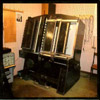 At first listen, COILANS seems like Exhibit A for the sort of experimental audio that functions as more of an intellectual or conceptual pleasure, rather than the sort of viscerally satisfying music I've come to expect from Coil. It clocks in at well over four hours of entirely unstructured, rhythm-less high-frequency sine-waves and subtly shifting AC hum. Tracks have no beginning or end, no point-counterpoint or resolution, and no tonal consistency. This new three-disc set also includes a DVD of synchronized digital animations for four of the tracks. It's a reissue and expansion of ANS, a limited edition, tour-only CD released last year, minimally packaged in an unmarked black plastic clamshell. This new boxed set comes in a beautiful foldout cardboard package (identical to the recent reissue of Nurse With Wound's Soliloquy for Lilith) decorated with pictures of the disused ANS machine itself, sitting neglected in a basement room of the Moscow State University, rarely used and in dire need of a radical overhaul. It was built in 1958 by Evgeny Murzin, who set out to create a synthesizer capable of producing the full range of audible frequency via a unique photoelectric process. The composer inscribes his visual "score" onto a glass plate covered with sticky black mastic, slides it through the machine, which reads the inscribed plate and converts the etchings into sound produced by a system of 800 oscillators. In the liner notes, which provide further technical information about the machine, Coil acknowledge that it takes a lot of practice and skill for the user to relate the marks on the plate to the resultant sounds. Soviet composer Alfred Schnittke (whose name is misspelled in the notes) spent an entire year of intensive work with the machine to produce his one and only piece of electronic music entitled "Flow." However, Coil spent only a few days with the ANS, so by their own admission, the sounds on these three discs cannot be described as "compositions" in any sense. Instead, the sounds represent an accidental interpretation of Coil's visual art into audible electricity. As such, it is pointless to assess the musical merit of any of these pieces. The soundpieces in the set are the work of various solo and group alignments of Jhonn Balance, Peter Christopherson, Ossian Brown, Thighpaulsandra and Ivan Pavlov of COH. The notes do not identify which track features which personnel, either because they can't remember or they think it doesn't matter. The CD wallets (and the prints included with the first edition of the set) feature some of the line drawings that were used to make these pieces, but once again, the listener is given no indication which drawings produced which sounds. The drawings operate as Spare-style magical talismans, where occult symbols and "alphabet of desire" glyphs representing words or phrases (such as the tautological "IT JUST IS" on the back of disc B) exist as arcane sigillizations. But the ANS is able to take these occult strategies a step beyond the usual, by transforming them into an entirely exotic lexicon of ghostly electric frequencies. This relation of visual image to sound had the effect of a strange form of synaesthesia on me as I waded through these four discs of unprocessed analog tones; I began to form novel mental connections between sound and vision, thoughts and symbols. Halfway through the third disc I had become like Nikola Tesla, obsessively listening to electronic signals trying to pick out messages he was certain were being transmitted by extraterrestrials. Is it possible for the mind to subconsciously decode this esoteric system of pulsations, throbs, clicks and whirrs? It's impossible to say with any certainty, but the mere suggestion that it might be so makes the sound entirely compelling. At first glance, the DVD animations seemed no more inventive than WinAmp visuals, but I soon noticed the subtle psychedelic abstractions present in each perfectly synchronized schema. By the end of my COILANS adventure, I was tuned into a heretofore unexplored magickal current, a current that sparks and buzzes with vibrations of the manifest spirit. Electricity has truly made angels of us all.
At first listen, COILANS seems like Exhibit A for the sort of experimental audio that functions as more of an intellectual or conceptual pleasure, rather than the sort of viscerally satisfying music I've come to expect from Coil. It clocks in at well over four hours of entirely unstructured, rhythm-less high-frequency sine-waves and subtly shifting AC hum. Tracks have no beginning or end, no point-counterpoint or resolution, and no tonal consistency. This new three-disc set also includes a DVD of synchronized digital animations for four of the tracks. It's a reissue and expansion of ANS, a limited edition, tour-only CD released last year, minimally packaged in an unmarked black plastic clamshell. This new boxed set comes in a beautiful foldout cardboard package (identical to the recent reissue of Nurse With Wound's Soliloquy for Lilith) decorated with pictures of the disused ANS machine itself, sitting neglected in a basement room of the Moscow State University, rarely used and in dire need of a radical overhaul. It was built in 1958 by Evgeny Murzin, who set out to create a synthesizer capable of producing the full range of audible frequency via a unique photoelectric process. The composer inscribes his visual "score" onto a glass plate covered with sticky black mastic, slides it through the machine, which reads the inscribed plate and converts the etchings into sound produced by a system of 800 oscillators. In the liner notes, which provide further technical information about the machine, Coil acknowledge that it takes a lot of practice and skill for the user to relate the marks on the plate to the resultant sounds. Soviet composer Alfred Schnittke (whose name is misspelled in the notes) spent an entire year of intensive work with the machine to produce his one and only piece of electronic music entitled "Flow." However, Coil spent only a few days with the ANS, so by their own admission, the sounds on these three discs cannot be described as "compositions" in any sense. Instead, the sounds represent an accidental interpretation of Coil's visual art into audible electricity. As such, it is pointless to assess the musical merit of any of these pieces. The soundpieces in the set are the work of various solo and group alignments of Jhonn Balance, Peter Christopherson, Ossian Brown, Thighpaulsandra and Ivan Pavlov of COH. The notes do not identify which track features which personnel, either because they can't remember or they think it doesn't matter. The CD wallets (and the prints included with the first edition of the set) feature some of the line drawings that were used to make these pieces, but once again, the listener is given no indication which drawings produced which sounds. The drawings operate as Spare-style magical talismans, where occult symbols and "alphabet of desire" glyphs representing words or phrases (such as the tautological "IT JUST IS" on the back of disc B) exist as arcane sigillizations. But the ANS is able to take these occult strategies a step beyond the usual, by transforming them into an entirely exotic lexicon of ghostly electric frequencies. This relation of visual image to sound had the effect of a strange form of synaesthesia on me as I waded through these four discs of unprocessed analog tones; I began to form novel mental connections between sound and vision, thoughts and symbols. Halfway through the third disc I had become like Nikola Tesla, obsessively listening to electronic signals trying to pick out messages he was certain were being transmitted by extraterrestrials. Is it possible for the mind to subconsciously decode this esoteric system of pulsations, throbs, clicks and whirrs? It's impossible to say with any certainty, but the mere suggestion that it might be so makes the sound entirely compelling. At first glance, the DVD animations seemed no more inventive than WinAmp visuals, but I soon noticed the subtle psychedelic abstractions present in each perfectly synchronized schema. By the end of my COILANS adventure, I was tuned into a heretofore unexplored magickal current, a current that sparks and buzzes with vibrations of the manifest spirit. Electricity has truly made angels of us all.
samples:
 Like great film noir, everypiece of Murcof's puzzle is obviously manufactured and manipulated andcalculated and refined; it so completely captures a tone that I don'tmind that the sets are fake or the lighting is hyper-real.
Like great film noir, everypiece of Murcof's puzzle is obviously manufactured and manipulated andcalculated and refined; it so completely captures a tone that I don'tmind that the sets are fake or the lighting is hyper-real.

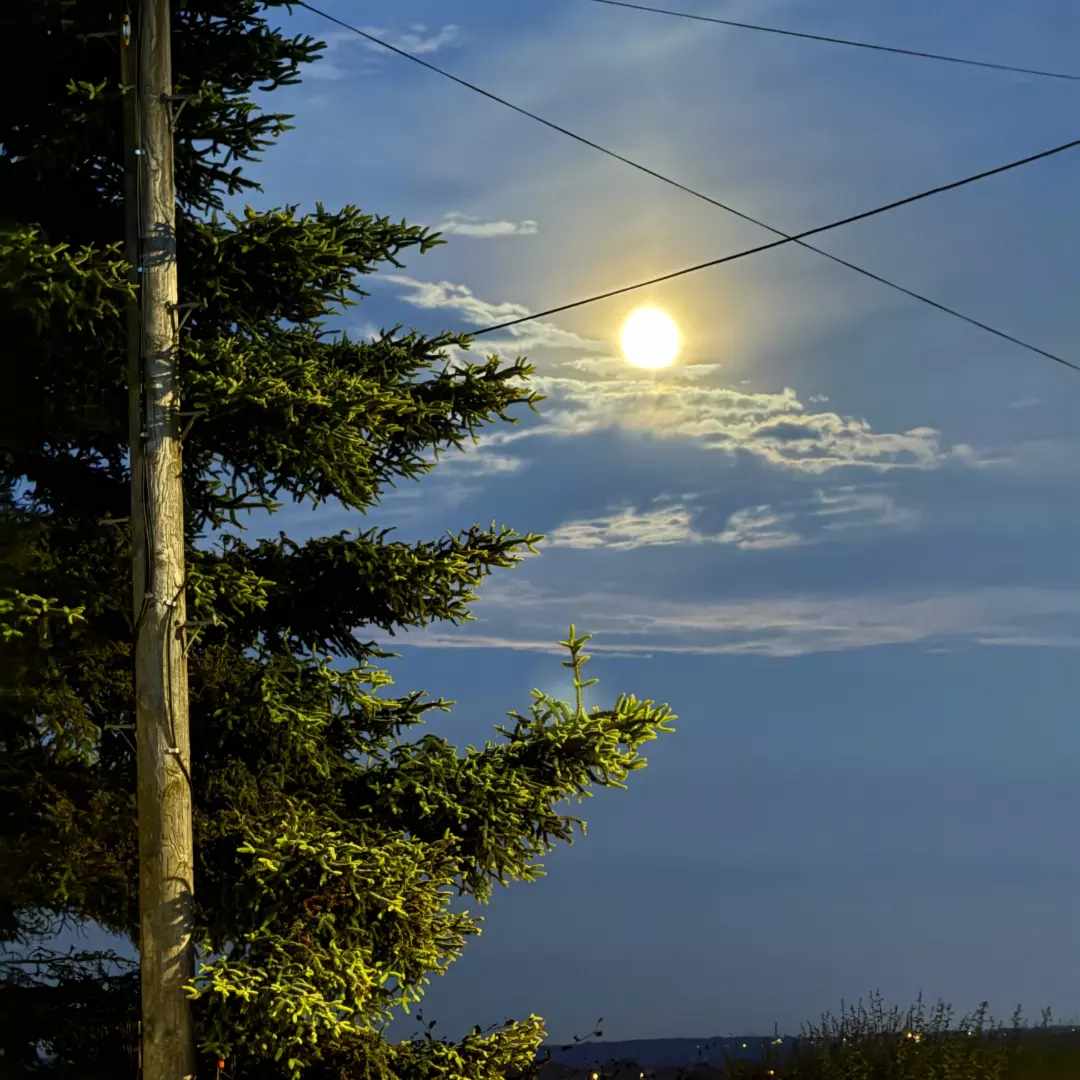
 Pup is another entry into the highly nuanced, subtle, and delicate world ofminimalism that at one time would have been called “ambient” but nowgoes by titles like “lowercase.” There’s too much of this sortof thing for me to be able to stay abreast of, but Dan Abrams’ work asFenton is solid and enjoyable.
Pup is another entry into the highly nuanced, subtle, and delicate world ofminimalism that at one time would have been called “ambient” but nowgoes by titles like “lowercase.” There’s too much of this sortof thing for me to be able to stay abreast of, but Dan Abrams’ work asFenton is solid and enjoyable.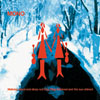 In describing the sound of Mono's third full-length album it's hard not to invoke a number of bands whom I have nevertheless sworn to eschew in the body of this review. Let it suffice to say that the music is sweeping, anthemic, instrumental, crescendo-heavy, at once deliberately delicate and mindlessly reckless; this much should give you some idea of the musical path on which Mono tread (some might even call it a new path to Helicon, to tell the truth).
In describing the sound of Mono's third full-length album it's hard not to invoke a number of bands whom I have nevertheless sworn to eschew in the body of this review. Let it suffice to say that the music is sweeping, anthemic, instrumental, crescendo-heavy, at once deliberately delicate and mindlessly reckless; this much should give you some idea of the musical path on which Mono tread (some might even call it a new path to Helicon, to tell the truth).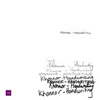 Youth and painfully melodramatic vocals don't spell out "genius" in big, bold letters. While much of the music that this 17 year-old old writes sounds nice (in terms of production), many of his songs are covered in a too-sweet glow that renders all the glorious fuzz and inherent beauty of his guitar work null. Connor Kirby-Long makes music full of good ideas: at times his arrangements hint at a desire to push his own songwriting abilities forward, but all too often this results in a stifling inertia where nothing goes anywhere. There's huge washes of electronic buzz permeating every corner of every song, but this isn't enough to carry the record all by itself.
Youth and painfully melodramatic vocals don't spell out "genius" in big, bold letters. While much of the music that this 17 year-old old writes sounds nice (in terms of production), many of his songs are covered in a too-sweet glow that renders all the glorious fuzz and inherent beauty of his guitar work null. Connor Kirby-Long makes music full of good ideas: at times his arrangements hint at a desire to push his own songwriting abilities forward, but all too often this results in a stifling inertia where nothing goes anywhere. There's huge washes of electronic buzz permeating every corner of every song, but this isn't enough to carry the record all by itself. In an era when so many guitarists have taken to laptop processing in order to coax new life from their thought-tired instruments, it seems only fair that other solo-instrumentalists should join the fun. And while the cello has enjoyed its fair share of fusion within the rock sphere, I've yet to see someone sit alone with this instrument, so engorged with classical and acoustic traditions, and really "plug in." Part of what makes Arnold Haberl's output as Noid so fascinating is the way the Austrian cellist moves beyond a banal, deconstructivist treatment of his playing and into ideas for composition where the computer feels less like a medium guiding the production of a piece and more like a voice within the music, to be engaged and countered, rather than simply played-through. Haberl's pieces branch off of strict minimalist ideas, bypassing crude layering techniques of the analog past and instead favoring tightly-wound, stuttering loop effects, drawn out often to the realm of nauseous formalism. Rarely is any multi-tracking involved in Noid's creations; rather miniature fragments of playing are captured, treated, and allowed to loop out, at times for over ten minutes with no real variation. The cello's woody groan becomes an industrial sander on the opening "melodien," stripped of human presence, even a performer's pause or the negative space of a hand slightly off-beat. It's clear after such a beginning that this will be "process" music, here less about the process of making, which becomes increasingly transparent as the disc progresses, and more about the process of listening, of accepting the music's sensory overload in juxtaposition with virtual lifelessness of the sounds themselves and the possibility of their "performance." Haberl does perform with live sampling and manipulation, and the points on Monodigmen where his cello is left recognizable logically become some of the most mind-numbing. "Vacuum 1" is a 12-minute piece of the cellist in lock-groove mode, struggling around what sounds like the opening strains of "Flight of the Bumblebee." After the question of Haberl actually playing such an infernal half-measure over and over again has been ruled out, listening becomes a tug-of-war between enduring the instrument's stunted flight and the utter detachment resulting from the search for patterns, or anything "material" in the music, and finding nothing. I hesitate to dismiss Noid's music as a purely formal exercise because of the way he continuously engages the elements of poise and human concentration almost inseparable from his chosen instrument, in an ultimate reduction of all that is traditionally expressive about it. There are times when Monodigmen feels like an extension of Cage's efforts to communicate the zen-like void or 'nothing' in musical composition; other times, however, Haberl's creation seems too much of an endurance test to communicate anything worth the time it takes to get there.
In an era when so many guitarists have taken to laptop processing in order to coax new life from their thought-tired instruments, it seems only fair that other solo-instrumentalists should join the fun. And while the cello has enjoyed its fair share of fusion within the rock sphere, I've yet to see someone sit alone with this instrument, so engorged with classical and acoustic traditions, and really "plug in." Part of what makes Arnold Haberl's output as Noid so fascinating is the way the Austrian cellist moves beyond a banal, deconstructivist treatment of his playing and into ideas for composition where the computer feels less like a medium guiding the production of a piece and more like a voice within the music, to be engaged and countered, rather than simply played-through. Haberl's pieces branch off of strict minimalist ideas, bypassing crude layering techniques of the analog past and instead favoring tightly-wound, stuttering loop effects, drawn out often to the realm of nauseous formalism. Rarely is any multi-tracking involved in Noid's creations; rather miniature fragments of playing are captured, treated, and allowed to loop out, at times for over ten minutes with no real variation. The cello's woody groan becomes an industrial sander on the opening "melodien," stripped of human presence, even a performer's pause or the negative space of a hand slightly off-beat. It's clear after such a beginning that this will be "process" music, here less about the process of making, which becomes increasingly transparent as the disc progresses, and more about the process of listening, of accepting the music's sensory overload in juxtaposition with virtual lifelessness of the sounds themselves and the possibility of their "performance." Haberl does perform with live sampling and manipulation, and the points on Monodigmen where his cello is left recognizable logically become some of the most mind-numbing. "Vacuum 1" is a 12-minute piece of the cellist in lock-groove mode, struggling around what sounds like the opening strains of "Flight of the Bumblebee." After the question of Haberl actually playing such an infernal half-measure over and over again has been ruled out, listening becomes a tug-of-war between enduring the instrument's stunted flight and the utter detachment resulting from the search for patterns, or anything "material" in the music, and finding nothing. I hesitate to dismiss Noid's music as a purely formal exercise because of the way he continuously engages the elements of poise and human concentration almost inseparable from his chosen instrument, in an ultimate reduction of all that is traditionally expressive about it. There are times when Monodigmen feels like an extension of Cage's efforts to communicate the zen-like void or 'nothing' in musical composition; other times, however, Haberl's creation seems too much of an endurance test to communicate anything worth the time it takes to get there.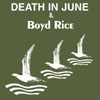 Ever since unleashing the amazing one-two punch of But What Ends When the Symbols Shatter? and Rose Clouds of Holocaust, Douglas P. has been creatively floundering. His teaming with Albin Julius of Der Blutharsch yielded two albums that abandoned all of Death in June's usual subtlety and atmosphere in favor of overblown orchestral loops littered with samples from Leni Riefenstahl films and filled with laughable lyrics about Kristallnacht and anal sex. Then came the nadir, 2001's All Pigs Must Die, a prolonged screed against the now-defunct World Serpent Distribution that played like a vicious self-parody. Now comes the new album, a collaboration with fellow fascist sympathizer Boyd Rice. I might have expected them to produce some kind of martial epic extolling the virtues of Bush's imperialist wars, but instead they opt for a more personal album, a return of sorts to the guitars-and-windchimes sound that characterizes classic Death in June. As could be expected, every track is overloaded with excessive echo and reverb, and most are scattered with dialogue snippets from cult films, a familiar DIJ tactic. Unfortunately, Douglas P. has not learned any new chords, recycling the same dull strumming he's been churning out for twenty years. Boyd Rice provides vocals for most of the tracks, in his familiar I-can't-bothered-to-sing monotone. "Sunwheels of My Mind" is almost clever, a solar-centric adaptation of Dusty Springfield's classic "Windmills of My Mind." The album's lyrics deal primarily with the passage of time (punctuated by the Alarm of the title) and a preoccupation with solar imagery. It's the old familiar sun = light = Lucifer = Satan = power equation, a fairly juvenile symbolic conceit coming from a pair of middle-aged men. All that being said, I still liked this much, much better than All Pigs Must Die or the recent Wolf Pact album. It's a big improvement over Nazi tape-loops and boring personal vendettas, but its appeal is largely nostalgic—it reminds me of a time when DIJ were slightly relevant. At this point, I'm not holding out much hope that Douglas P. will ever come up with another truly worthwhile album.
Ever since unleashing the amazing one-two punch of But What Ends When the Symbols Shatter? and Rose Clouds of Holocaust, Douglas P. has been creatively floundering. His teaming with Albin Julius of Der Blutharsch yielded two albums that abandoned all of Death in June's usual subtlety and atmosphere in favor of overblown orchestral loops littered with samples from Leni Riefenstahl films and filled with laughable lyrics about Kristallnacht and anal sex. Then came the nadir, 2001's All Pigs Must Die, a prolonged screed against the now-defunct World Serpent Distribution that played like a vicious self-parody. Now comes the new album, a collaboration with fellow fascist sympathizer Boyd Rice. I might have expected them to produce some kind of martial epic extolling the virtues of Bush's imperialist wars, but instead they opt for a more personal album, a return of sorts to the guitars-and-windchimes sound that characterizes classic Death in June. As could be expected, every track is overloaded with excessive echo and reverb, and most are scattered with dialogue snippets from cult films, a familiar DIJ tactic. Unfortunately, Douglas P. has not learned any new chords, recycling the same dull strumming he's been churning out for twenty years. Boyd Rice provides vocals for most of the tracks, in his familiar I-can't-bothered-to-sing monotone. "Sunwheels of My Mind" is almost clever, a solar-centric adaptation of Dusty Springfield's classic "Windmills of My Mind." The album's lyrics deal primarily with the passage of time (punctuated by the Alarm of the title) and a preoccupation with solar imagery. It's the old familiar sun = light = Lucifer = Satan = power equation, a fairly juvenile symbolic conceit coming from a pair of middle-aged men. All that being said, I still liked this much, much better than All Pigs Must Die or the recent Wolf Pact album. It's a big improvement over Nazi tape-loops and boring personal vendettas, but its appeal is largely nostalgic—it reminds me of a time when DIJ were slightly relevant. At this point, I'm not holding out much hope that Douglas P. will ever come up with another truly worthwhile album. After several releases for various labels, this German duo release their first full length for Ant-Zen. The album covers a wide variety of styles and textures in a concise 42 minutes. Over eight tracks they attempt to achieve a balance between melodic and abrasive elements.
After several releases for various labels, this German duo release their first full length for Ant-Zen. The album covers a wide variety of styles and textures in a concise 42 minutes. Over eight tracks they attempt to achieve a balance between melodic and abrasive elements.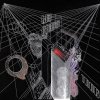 Also on the short side—but decidedly not as fun—is the third album from French musician, vocalist and poet Toog. The record is intended to be a modern variation on Poems For Lou, a book written during World War I by poet and soldier Guillaume Apollinaire who was inspired by a woman named Lou that he loved and lost in Nice before the war. In Toog's version, the role of the muse is played by actress Asia Argento, and WWI is replaced by the war and terrorism of the post-9/11 world. It's impossible for me to verify if Toog's words truly reflect these themes, as aside from two pieces that are sultrily spoken by Argento, all of the readings are in French, a language that I remember very little of from my lessons of many years ago. At least the music, which is produced by French sound artist Digiki, is generally quite nice, mixing together elements of downtempo electro & ambient with low-key pop & hip-hop, and even some hints of industrial, classical and cabaret. Given the strong poetic theme of the work, however, it's quite obvious that without some understanding of the words, listeners just won't get the full message that Toog is trying to convey in the 10 tracks on 'Lou Etendue'.
Also on the short side—but decidedly not as fun—is the third album from French musician, vocalist and poet Toog. The record is intended to be a modern variation on Poems For Lou, a book written during World War I by poet and soldier Guillaume Apollinaire who was inspired by a woman named Lou that he loved and lost in Nice before the war. In Toog's version, the role of the muse is played by actress Asia Argento, and WWI is replaced by the war and terrorism of the post-9/11 world. It's impossible for me to verify if Toog's words truly reflect these themes, as aside from two pieces that are sultrily spoken by Argento, all of the readings are in French, a language that I remember very little of from my lessons of many years ago. At least the music, which is produced by French sound artist Digiki, is generally quite nice, mixing together elements of downtempo electro & ambient with low-key pop & hip-hop, and even some hints of industrial, classical and cabaret. Given the strong poetic theme of the work, however, it's quite obvious that without some understanding of the words, listeners just won't get the full message that Toog is trying to convey in the 10 tracks on 'Lou Etendue'.
 At first listen, COILANS seems like Exhibit A for the sort of experimental audio that functions as more of an intellectual or conceptual pleasure, rather than the sort of viscerally satisfying music I've come to expect from Coil. It clocks in at well over four hours of entirely unstructured, rhythm-less high-frequency sine-waves and subtly shifting AC hum. Tracks have no beginning or end, no point-counterpoint or resolution, and no tonal consistency. This new three-disc set also includes a DVD of synchronized digital animations for four of the tracks. It's a reissue and expansion of ANS, a limited edition, tour-only CD released last year, minimally packaged in an unmarked black plastic clamshell. This new boxed set comes in a beautiful foldout cardboard package (identical to the recent reissue of Nurse With Wound's Soliloquy for Lilith) decorated with pictures of the disused ANS machine itself, sitting neglected in a basement room of the Moscow State University, rarely used and in dire need of a radical overhaul. It was built in 1958 by Evgeny Murzin, who set out to create a synthesizer capable of producing the full range of audible frequency via a unique photoelectric process. The composer inscribes his visual "score" onto a glass plate covered with sticky black mastic, slides it through the machine, which reads the inscribed plate and converts the etchings into sound produced by a system of 800 oscillators. In the liner notes, which provide further technical information about the machine, Coil acknowledge that it takes a lot of practice and skill for the user to relate the marks on the plate to the resultant sounds. Soviet composer Alfred Schnittke (whose name is misspelled in the notes) spent an entire year of intensive work with the machine to produce his one and only piece of electronic music entitled "Flow." However, Coil spent only a few days with the ANS, so by their own admission, the sounds on these three discs cannot be described as "compositions" in any sense. Instead, the sounds represent an accidental interpretation of Coil's visual art into audible electricity. As such, it is pointless to assess the musical merit of any of these pieces. The soundpieces in the set are the work of various solo and group alignments of Jhonn Balance, Peter Christopherson, Ossian Brown, Thighpaulsandra and Ivan Pavlov of COH. The notes do not identify which track features which personnel, either because they can't remember or they think it doesn't matter. The CD wallets (and the prints included with the first edition of the set) feature some of the line drawings that were used to make these pieces, but once again, the listener is given no indication which drawings produced which sounds. The drawings operate as Spare-style magical talismans, where occult symbols and "alphabet of desire" glyphs representing words or phrases (such as the tautological "IT JUST IS" on the back of disc B) exist as arcane sigillizations. But the ANS is able to take these occult strategies a step beyond the usual, by transforming them into an entirely exotic lexicon of ghostly electric frequencies. This relation of visual image to sound had the effect of a strange form of synaesthesia on me as I waded through these four discs of unprocessed analog tones; I began to form novel mental connections between sound and vision, thoughts and symbols. Halfway through the third disc I had become like Nikola Tesla, obsessively listening to electronic signals trying to pick out messages he was certain were being transmitted by extraterrestrials. Is it possible for the mind to subconsciously decode this esoteric system of pulsations, throbs, clicks and whirrs? It's impossible to say with any certainty, but the mere suggestion that it might be so makes the sound entirely compelling. At first glance, the DVD animations seemed no more inventive than WinAmp visuals, but I soon noticed the subtle psychedelic abstractions present in each perfectly synchronized schema. By the end of my COILANS adventure, I was tuned into a heretofore unexplored magickal current, a current that sparks and buzzes with vibrations of the manifest spirit. Electricity has truly made angels of us all.
At first listen, COILANS seems like Exhibit A for the sort of experimental audio that functions as more of an intellectual or conceptual pleasure, rather than the sort of viscerally satisfying music I've come to expect from Coil. It clocks in at well over four hours of entirely unstructured, rhythm-less high-frequency sine-waves and subtly shifting AC hum. Tracks have no beginning or end, no point-counterpoint or resolution, and no tonal consistency. This new three-disc set also includes a DVD of synchronized digital animations for four of the tracks. It's a reissue and expansion of ANS, a limited edition, tour-only CD released last year, minimally packaged in an unmarked black plastic clamshell. This new boxed set comes in a beautiful foldout cardboard package (identical to the recent reissue of Nurse With Wound's Soliloquy for Lilith) decorated with pictures of the disused ANS machine itself, sitting neglected in a basement room of the Moscow State University, rarely used and in dire need of a radical overhaul. It was built in 1958 by Evgeny Murzin, who set out to create a synthesizer capable of producing the full range of audible frequency via a unique photoelectric process. The composer inscribes his visual "score" onto a glass plate covered with sticky black mastic, slides it through the machine, which reads the inscribed plate and converts the etchings into sound produced by a system of 800 oscillators. In the liner notes, which provide further technical information about the machine, Coil acknowledge that it takes a lot of practice and skill for the user to relate the marks on the plate to the resultant sounds. Soviet composer Alfred Schnittke (whose name is misspelled in the notes) spent an entire year of intensive work with the machine to produce his one and only piece of electronic music entitled "Flow." However, Coil spent only a few days with the ANS, so by their own admission, the sounds on these three discs cannot be described as "compositions" in any sense. Instead, the sounds represent an accidental interpretation of Coil's visual art into audible electricity. As such, it is pointless to assess the musical merit of any of these pieces. The soundpieces in the set are the work of various solo and group alignments of Jhonn Balance, Peter Christopherson, Ossian Brown, Thighpaulsandra and Ivan Pavlov of COH. The notes do not identify which track features which personnel, either because they can't remember or they think it doesn't matter. The CD wallets (and the prints included with the first edition of the set) feature some of the line drawings that were used to make these pieces, but once again, the listener is given no indication which drawings produced which sounds. The drawings operate as Spare-style magical talismans, where occult symbols and "alphabet of desire" glyphs representing words or phrases (such as the tautological "IT JUST IS" on the back of disc B) exist as arcane sigillizations. But the ANS is able to take these occult strategies a step beyond the usual, by transforming them into an entirely exotic lexicon of ghostly electric frequencies. This relation of visual image to sound had the effect of a strange form of synaesthesia on me as I waded through these four discs of unprocessed analog tones; I began to form novel mental connections between sound and vision, thoughts and symbols. Halfway through the third disc I had become like Nikola Tesla, obsessively listening to electronic signals trying to pick out messages he was certain were being transmitted by extraterrestrials. Is it possible for the mind to subconsciously decode this esoteric system of pulsations, throbs, clicks and whirrs? It's impossible to say with any certainty, but the mere suggestion that it might be so makes the sound entirely compelling. At first glance, the DVD animations seemed no more inventive than WinAmp visuals, but I soon noticed the subtle psychedelic abstractions present in each perfectly synchronized schema. By the end of my COILANS adventure, I was tuned into a heretofore unexplored magickal current, a current that sparks and buzzes with vibrations of the manifest spirit. Electricity has truly made angels of us all.
